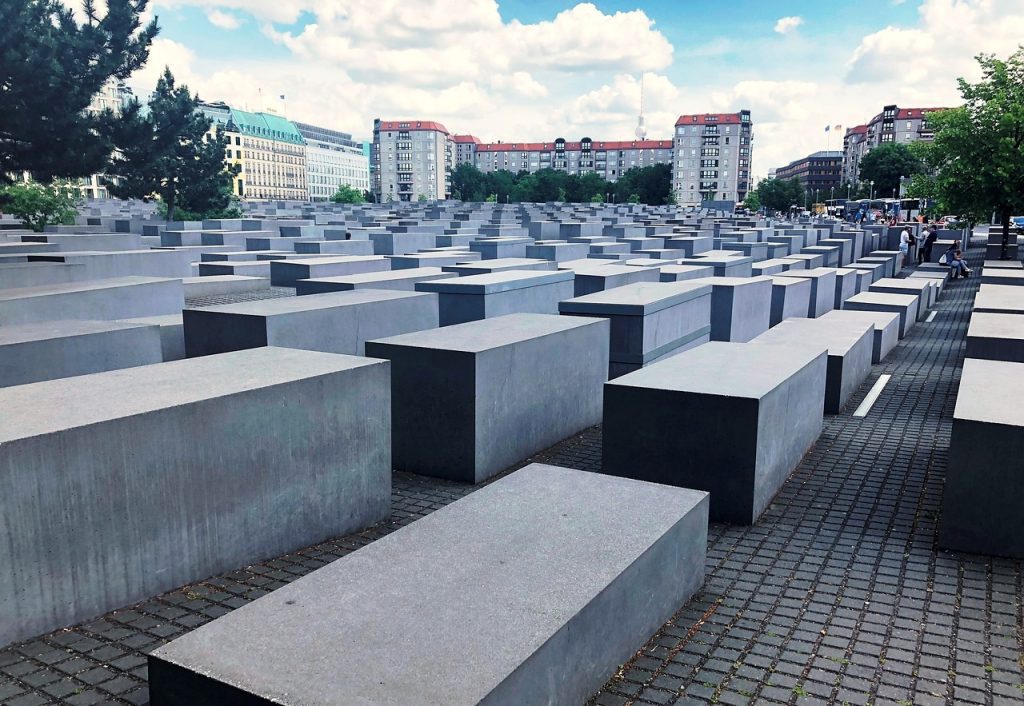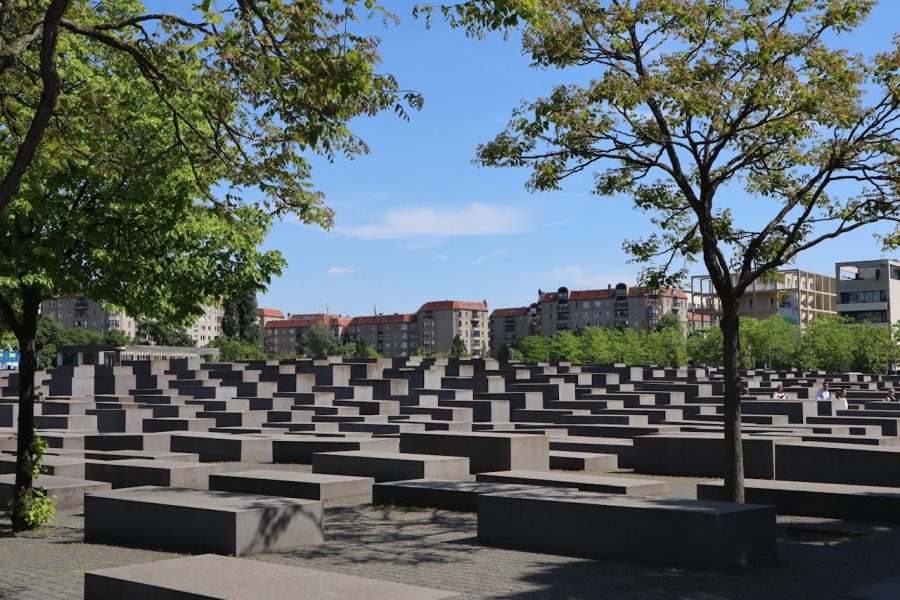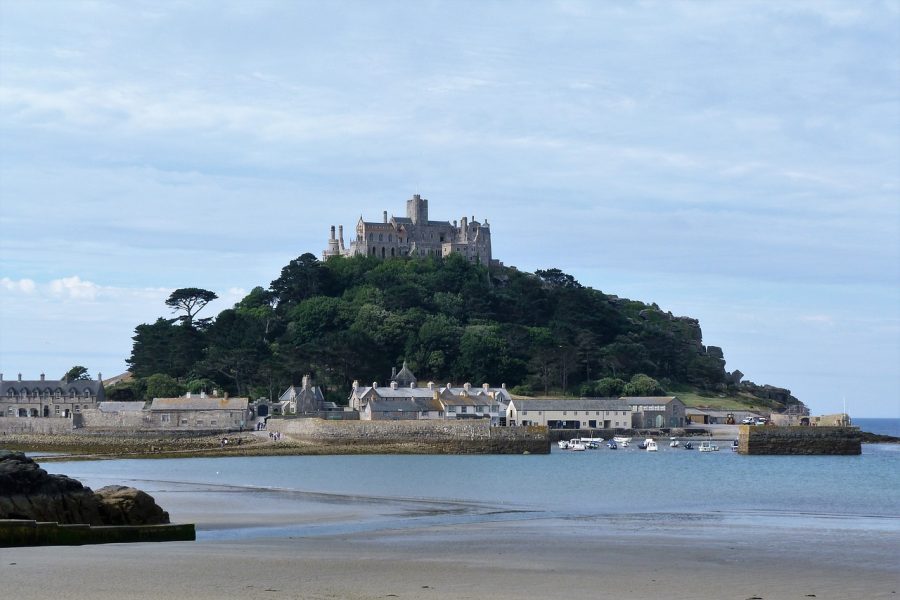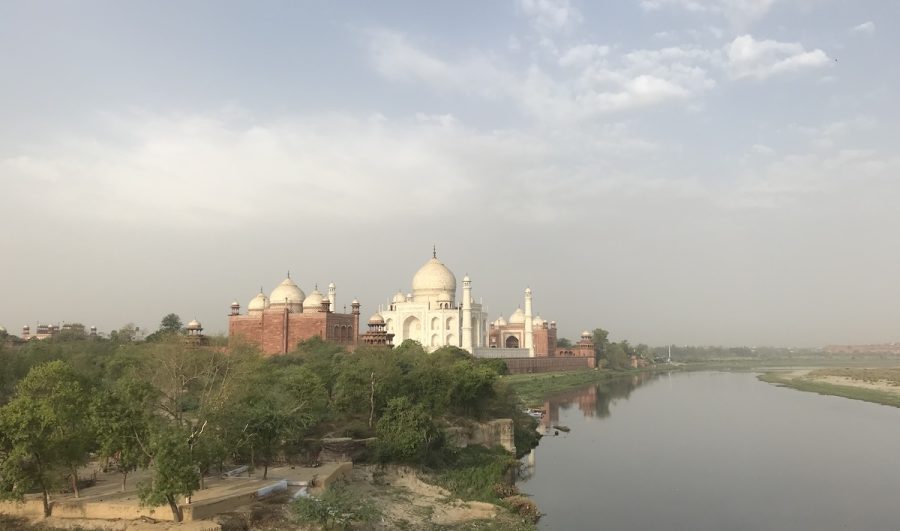The Holocaust Memorial is situated in the midst of the busy city of Berlin. It plays the role where the many tragedies of the holocaust are remembered as well as recalled with great sadness. I passed by the course of solid slabs, each one vast and high. And I couldn’t but feel the burden of history down my spine.
Architecture and Design
The Holocaust Memorial is also known as the Memorial to the Murdered Jews of Europe. It is dedicated to the six million European Jew victims who died at the hands of the Nazis during World War 2. Unveiled by architect, Peter Eisenman and engineer Buro Happold, its minimalist appearance and unique construction is a very powerful statement. It is an impressive sight amidst all the brightness of the city. The memorial is free to visit.
It is composed of 2,711 concrete slabs, laid out in a grid over an area of 19,000 square meters, the memorial’s slabs differ in height making the ground over which the visitor walks uneven. Eisenman created the monument precisely so that visitors moving through it would feel disoriented and unnerved, mirroring the chaos of the Holocaust itself. The slabs almost begin to close in on visitors, looming overhead while invoking a feeling of isolation and oppression.
As I strolled down the corridors of concrete slabs, the forces of isolation hit me with penetrating strength. I also noticed that disorientation prevailed in the atmosphere. The uneven soil below my feet made me uncomfortable. And the endless slabs that stretched ahead into the sky, made me feel like an atom of dust next to the unthinkable scale of the Holocaust.
Furthermore, the memorial’s site in central Berlin is particularly evocative. Situated between the Brandenburg Gate and the location of Adolf Hitler’s bunker, it constitutes a timely reminder that Germany must always be sensitive to its past.
The Weight of History
All the stones have different dimensions. The higher and larger the stone, the more lives lost, the more families broken, and more futures denied. It was impossible not to daydream with all these people surrounding me. I could imagine the lives of those who once walked in these same streets. Their voices are gone but the memories are immortalized in history.
The memorial ground floor has an information center. It contains the names of all the Jews whose lives were lost during the Holocaust. It also serves as a monument to the truth that remembrance is of the utmost importance. And that those who died will never be forgotten. The exhibits, containing photographs, letters, and personal belongings, reveal lives that were prematurely ended. It becomes a very powerful illustration of how hate and intolerance could cost such a price.
On the other side of the memorial stands the crowded streets full of life. A sign that the human spirit is stronger than all the problems and that hope reigns over despair. As I came up from the memorial, I was confronted with the significance of looking beyond and uncovering the terrible truths.

The Holocaust Memorial in Berlin is much more than a mere collection of concrete slabs. It is a tangible yet abstract proof of the living relevance of remembrance. It is a clear and very harsh example of the consequence of silence and indifference. This should make us rise against hatred and bigotry, whatever and wherever we may meet it.
Yet, though the atrocities of the Holocaust are already history, the lessons we learn from it still count. As much for us who live in a world in which instability becomes the norm. Only by looking into the abyss of our history, we can create a foundation for a more prosperous future for the generations that will come.




